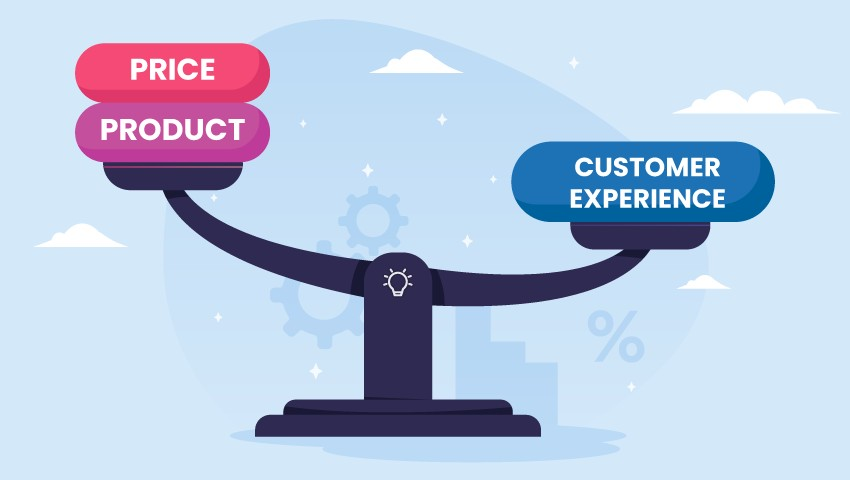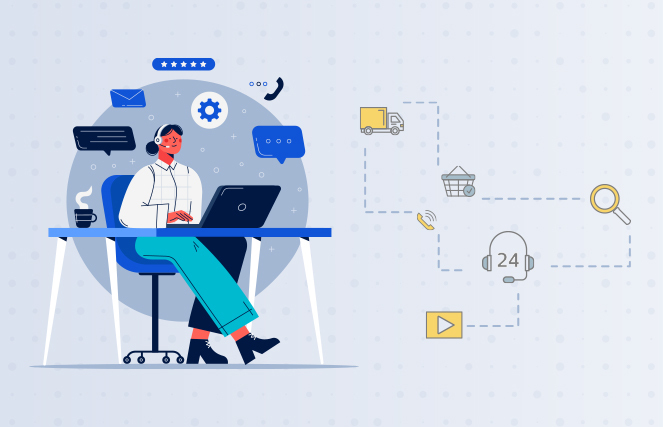15 years ago, the average consumer typically used two touch-points when buying an item and only 7% regularly used more than four. Today consumers use an average of almost six touch-points with nearly 50% regularly using more than four.
The way that companies handle customer service has dramatically changed over recent years. More than a decade ago, there were only limited ways to contact a company i.e., via calls, fax, or a personal visit. Nowadays, customers have multiple options to choose from. They can pick whatever is convenient to them – phone, email, live chat, SMS, and social media. The list appears endless.
In addition to that, 35% of customers expect to be able to contact the same customer service representative on any channel. The challenge for many companies is not only to be accessible in these channels but also to be able to deliver consistent and integrated service quality.
A consistent service quality across multiple channels significantly impacts the company’s revenue. Research shows that companies that provide a consistent service quality across multiple channels retain 89% of their customers, whereas companies that do not provide a consistent service quality are only able to retain 33%.
And this is why more companies are investing in omnichannel customer service!
- Omnichannel Customer Service: A Brief Overview
- Current Market Scenario of Omnichannel Support
- Omnichannel Vs. Multichannel Customer Support
- Which One Is Better: Omnichannel or Multichannel?
- 5 Notable Business Benefits for Omnichannel Support
- Omnichannel Customer Support Software Development Company
Omnichannel Customer Service: A Brief Overview
With omnichannel support, customers get numerous ways to interact with companies. It connects the experiences across the channels by making the customer experience completely seamless.
In an omnichannel setting, all the channels are connected. Social media, live chat, email, ticketing, phone, you name it. That way, you can offer a consistent customer experience regardless of the channel or touchpoint. It also ensures that agents can easily share context and notes about the customer’s previous interactions.
Omnichannel offers your customers multiple, integrated touchpoints so that they can interact with your product or service. Your customers can use a variety of contact channels to reach out and engage with you. The biggest benefit of omnichannel is that it entirely integrates into your customer portal. Hence, you do not have to jump between siloed channels or redirect to various platforms to send emails —it’s all right there. Here are some popular statistics around omnichannel customer service.
Current Market Scenario of Omnichannel Support
Statistics show that 47% of consumers admit to using three to five different communication channels to get in touch. 90% of customers expect a consistent brand experience across all channels. Omnichannel solutions allow you to streamline your communication process through a single unified channel and saves time and labor. The following graph shows the channels most preferred by the customers.
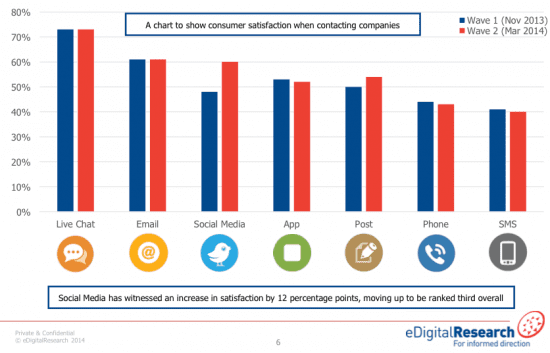
Most preferred communication channels
The popularity of online customer service, particularly live chat and email is rising with social media at the third position. According to a survey, 1 in 4 (26%) consumers have used live chat to contact a company. 73% of customers were ‘satisfied’ or ‘very satisfied with the experience they received via this touchpoint.
Phone calls and SMS are the lowest rated customer service touchpoint. Studies show that only 43% and 40% of consumers respectively were satisfied while using these touchpoints. So, this was all about omnichannel support and how various channels perform in the current market.
However, it is important to note that omnichannel customer service is a lot different from multichannel customer support.
Omnichannel Vs. Multichannel Customer Support
Here’s a pictorial representation of the difference between multichannel and omnichannel customer support.
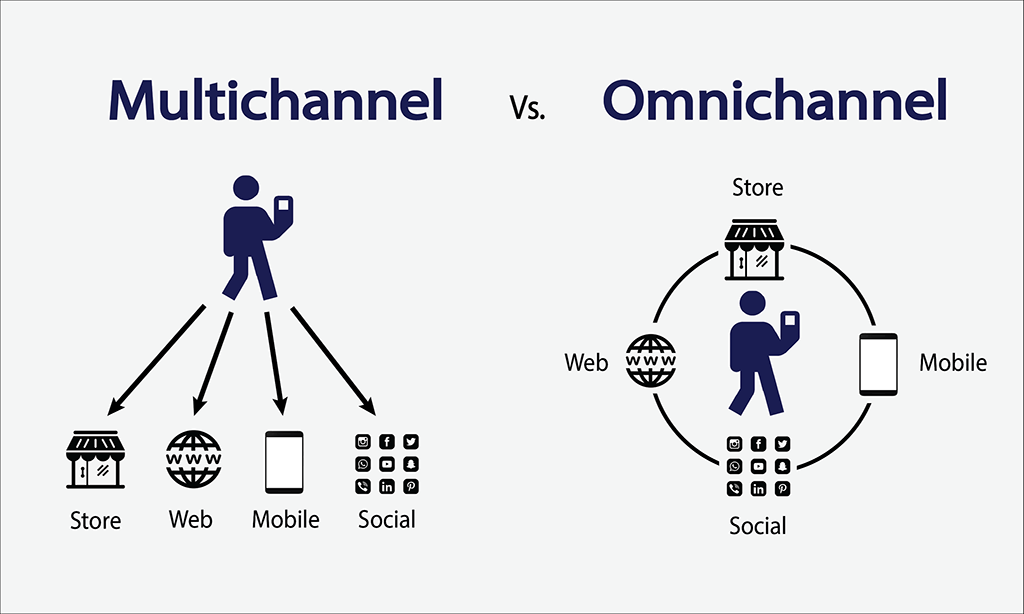
Multichannel Vs. Omnichannel Customer Support
Multichannel Support
Multichannel support simply means multiple channels through which business provides customer support. Customers can choose whichever method is convenient for them at any point in a given time.
For example, if a customer has a simple question, they may choose to communicate via SMS or a live chat option rather than going through the hassle of calling and waiting for an agent to respond. If they want detailed answers or if their query is major and difficult to articulate through typed text, they may choose to call and speak to an agent directly.
Multichannel support offers convenience to customers, by allowing them to choose the method of communication they prefer and that works best for them. This also shows that the brand and company cares about the customer’s preferences and overall experience.
Omnichannel Support
Omnichannel support helps you take the customer experience to the next level. It focuses on the seamless integration of available channels. Not only does a customer choose their preferred method of communication, but they can transition between multiple methods in the same interaction.
For example, let’s say a customer is interacting with an agent via live chat, but the issue needs to be explained and resolved extensively. In such a scenario the agent might want to shift their conversation on a call immediately. This allows the agents to have a more effective resolution in the same interaction. The customer wouldn’t have to start the communication all over again.
Hence, this results in a smooth customer experience, where you can resolve the customer’s issue through a seamless interaction.
Which One Is Better: Omnichannel or Multichannel?
If your customers are not able to reach you when they need you the most, it might result in a churn. It may sound drastic but studies show 64% of customers say that they expect to respond to them in real-time. At an enterprise level, the question thus arises of how to support these many customers with such high expectations.
52% of the customers who have a bad customer service experience with a brand will immediately stop buying from them. This means that if you choose not to offer support across several channels, it might not work out well. Hence, to make support more convenient for your customers, you must offer them several different channels.
Allow them to contact you where it best works for them. This is how you boost customer retention. You may adopt multichannel support to allow customers to reach out across multiple channels. But it would not integrate those channels in the same way as omnichannel. You cannot share context and customer history across channels with the multichannel approach. However, it is readily available if you go with the omnichannel approach. Considering the industry trends of 2021 and the comprehensive needs of customer support these days, it would be a popular opinion to go with integrated omnichannel support.
Adopt omnichannel solutions and engage with your customers across the channels of their choice. Omnichannel gives your customers a fully integrated, unified customer support experience with your company across various channels and devices. This enables you to deliver support efficiently. DeskXpand is one such omnichannel support software that helps you set up well-orchestrated support workflows across email, self-service, and other such mediums. Take a free trial and find out more.
5 Notable Business Benefits for Omnichannel Support
The main reason why businesses prefer omnichannel over multichannel services is that it lets you integrate the fragments of customer interactions scattered across different channels and offer a holistic experience. Omnichannel support affects more than just customer engagement and resolution speed. Let us take a look at the five important benefits of omnichannel support.
I. Timely Response and More Options
The ubiquity of smartphones has made customers unbiased towards the use of multiple channels. The last thing they want to do is wait. They believe that they should be able to engage with the channel of their choice instantly whenever they want. And omnichannel helps you provide exactly this. It gives more options for customers to interact with your business.
II. Promote Customer Self-Service
Omnichannel support improves the quality of customers by offering a seamless experience across various channels. It also saves your support team’s bandwidth by promoting self-service and faster response times.
By using the huge amount of collected data, integrated across channels, you can upgrade your strategy to serve your customer self-service. In a 2020 survey, 91% of customers said they would use a knowledge base rather than phone calls to solve their issues.
III. Contextual Customer Support
Integration is a key ingredient that can make or break your customer service strategy. Omnichannel allows you to work cohesively to steer the customer journey in the same direction. Omnichannel provides you the integration you need between your channels. It also provides the centralization of data.
IV. Better Your Sales
Omnichannel resources when aligned with your marketing strategy can yield surprising results. Omnichannel treats every channel as a support channel, which leads to more conversations. More conversations lead to more sales, although not necessarily in a direct sense.
V. Improve Customer Retention
Cross-channel engagement is inevitable for industries like e-commerce. According to a study, 71% of customers consider the digital and in-store experience equally important. Omnichannel uses CRM and automation tools to help you offer a more personalized experience to your customers. This eventually reduces the churn rates and increases retention.
Through omnichannel, you can reward and meaningfully engage with your returning customers. For example, you can simply send a discount or gift coupon SMS for items that they abandon in their cart. The omnichannel approach opens many possibilities for a meaningful engagement with your customers. You can send personalized messages and offers on their special day. In any business, a little recognition goes a long way, as far as turning your return customers into life-long customers.
Omnichannel Customer Support Software Development Company
DeskXpand is an omnichannel customer service software that helps you deliver a more cohesive, flexible, and integrated customer experience across all channels. It is built by functional experts and developers with certifications in their respective fields.
We are ISO27001 certified portal experts with 14+ years of industry experience. We aim to help you achieve complete visibility and attain a high-resolution rate through omnichannel customer support software. Contact our experts for ready-to-integrate solutions for Dynamics CRM, Salesforce, and other independent integrations. So, would you like to take a trail?

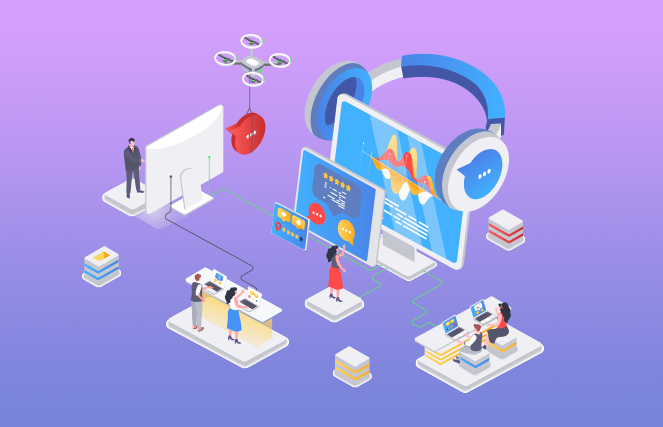



![Omnichannel Customer Support: The Future of Customer Interactions [And How You Can Get Started] Omnichannel Customer Support: The Future of Customer Interactions [And How You Can Get Started]](https://www.deskxpand.com/wp-content/uploads/2021/12/Omnichannel_Customer_Support.jpg)
